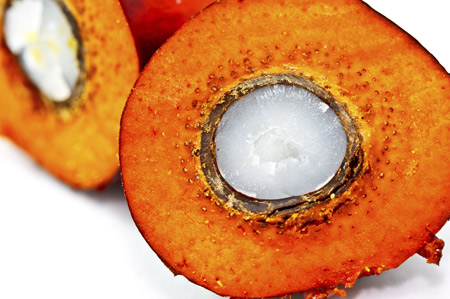 (Bloomberg) – Palm oil stockpiles in Malaysia probably fell for the first time since June after production in the world’s second-largest supplier slumped to a 10-month low.
(Bloomberg) – Palm oil stockpiles in Malaysia probably fell for the first time since June after production in the world’s second-largest supplier slumped to a 10-month low.
Inventories fell 5.2 percent to 2.76 million metric tons in December from a month earlier, according to the median of 10 estimates in a Bloomberg survey of planters, traders and analysts. Production slid 18 percent to 1.36 million tons, the lowest since February, while exports fell 6 percent to 1.41 million tons, the survey showed. The Malaysian Palm Oil Board will release official data by Jan. 11.
A seasonal decline in production in the coming months may help further trim stockpiles and counter sluggish demand from buyers including China and India. Futures capped their best performance since 2010 last year as the worst El Nino in almost two decades threatens crops in Southeast Asia.
“We’re just seeing the beginning of the low-crop season and we expect production to continue to drop in January and February,” said Ben Santoso, an analyst at DBS Bank Ltd. in Singapore. “Prices have already moved up. It’s already reflecting the anticipated drop in production especially in the first quarter.
Futures on Bursa Malaysia Derivatives dropped 1.1 percent to 2,422 ringgit ($551) a ton by 3:53 p.m. in Kuala Lumpur on Thursday. Prices, which climbed 9.7 percent in 2015, rallied to 2,508 ringgit on Dec. 31, the highest since June 2014.
Price Rally
The decline in output may be further exacerbated by monsoon flooding in some parts of Peninsular Malaysia last month and the impact of dry weather in early 2015, according to CIMB Investment Bank Bhd. The bank expects crude palm oil futures to rally 14 percent this year to average 2,450 ringgit a ton as supplies tighten, while Macquarie Group Ltd. sees prices climbing 18 percent.
The economic slowdown in China and weakening crude oil prices may still hurt demand for the vegetable oil used used in everything from instant noodles to shampoo and for blending in biodiesel.
“Physical demand is still very weak at the moment,” said David Ng, derivatives specialist at Phillip Futures Sdn Bhd. in Kuala Lumpur. “Usually, China starts loading up a few weeks before the Lunar New Year, but we don’t see this happening at all.”
Chinese Demand
China, the world’s biggest palm oil consumer after India, cut its palm imports from Malaysia by 44 percent in December from a month earlier, according to cargo surveyor Societe Generale de Surveillance. “I believe China has restocked what they need in the last couple of months,” Ng said. “Some demand probably shifted to soybean oil.”
Malaysia’s palm oil imports probably dropped 30 percent in December to 70,000 tons, the survey showed. Domestic consumption ranged between 170,000 tons and 240,000 tons, according to the survey.




